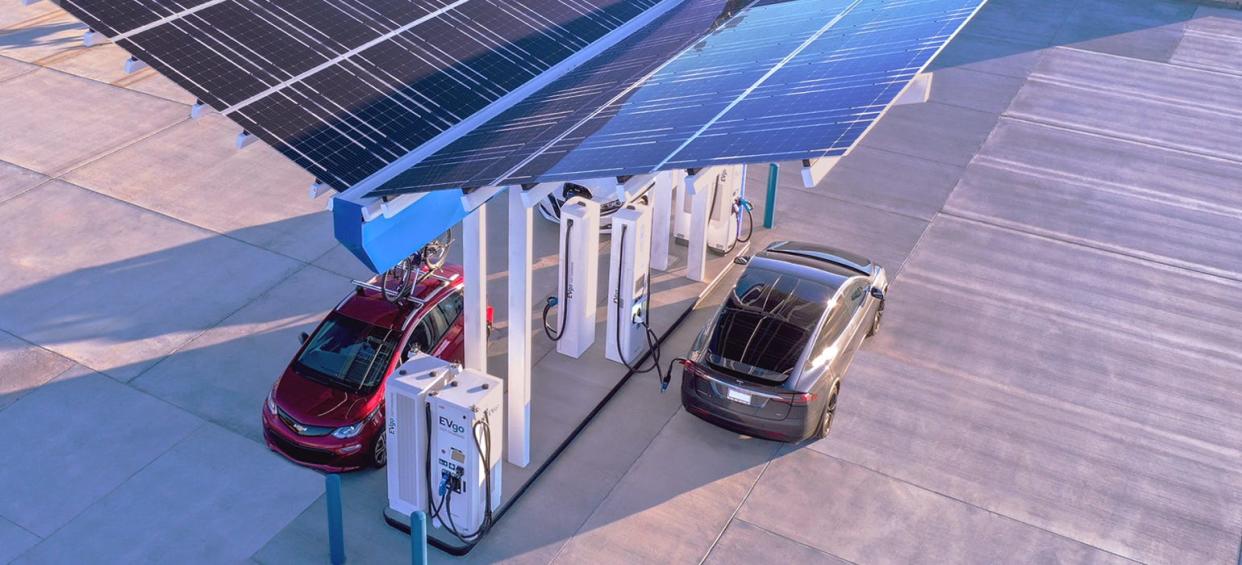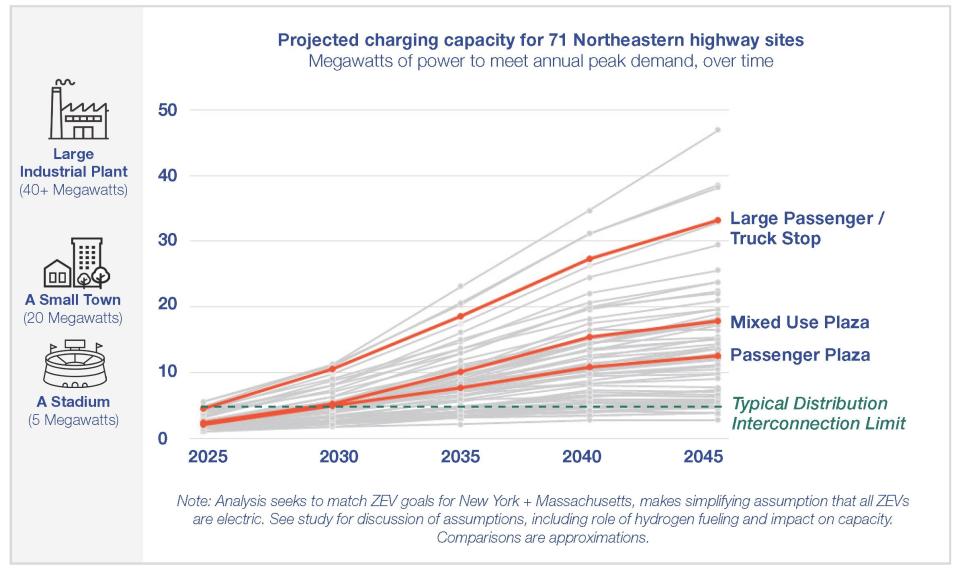Electric-vehicle charging stations could use as much power as a small town by 2035 — and the grid isn't ready

A boom in electric cars and trucks will require big upgrades to charging infrastructure.
A new study suggests that by 2035 some stations will need to provide as much power as a small town.
As soon as 2030, a typical charging station's peak energy usage could rival that of a sports arena.
US roads are destined for an onslaught of electric vehicles, from SUVs and pickup trucks to delivery vans and semis.
But the country's charging infrastructure — and more specifically the amount of power that stations are able to provide — isn't yet up to the task.
A new study from the electricity and gas utility National Grid (which serves parts of New York and Massachussetts) suggests that by 2030, the typical passenger plaza along a highway will demand as much power as a sports arena during its busiest times.
By 2035, a larger installation serving both passenger cars and trucks could need to provide 19 megawatts of peak power, National Grid projects, roughly what a small town uses. In 2045, that kind of truck stop may require 30 megawatts of capacity, approaching the peak usage of a large industrial plant.

National Grid estimated the future electricity demand at 71 potential charging sites, including service plazas and truck stops, in the Northeast. It assumed that all light-duty car sales will be electric by 2035 and all medium-duty and heavy-duty sales will go the same route by 2045, in line with Massachusetts' and New York's stated goals.
Today's charging and gas stations aren't equipped to provide nearly the amount of power that National Grid expects will be needed by 2030, much less 2045. Serving up 5 megawatts or more typically requires major power-grid improvements, the company said.
The study's authors argue that utilities and policymakers need to start planning for upgrades now to meet the demands of future highways — and avoid stunting the EV transition.
It's not that this challenge is insurmountable. Energy and transportation experts told Insider that, with some smart planning, utilities are capable of managing the coming EV wave.
Plus, these are early days. Teslas and other battery-powered models only account for around 5% of new-car sales in the US. The world of electric trucking is very much in its infancy.
But building out charging infrastructure takes time, and it pays to get ahead of the curve, National Grid said.
"Building these high-voltage interconnections and upgrades can take years, which is why it's important to take action right now," it wrote in its report. "By making 'no-regrets' upgrades at 'no-regrets' sites, we can make sure fast-charging is there when drivers need it—and not a moment too late."
Read the original article on Business Insider

